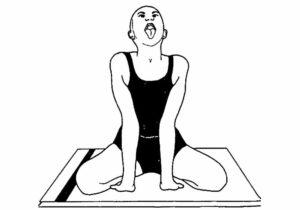Shavasana is derived from the Sanskrit word shava meaning corpse. Asana, a Hindi word, means a posture, thus resulting in the word meaning: Corpse Posture. Shavasana is a yogic relaxation asana and in it, you have to do nothing – just lie down on your back with your eyes shut and relax. This sounds very deceptively simple but during this asana, there has to be synchronization of your body movements with breathing. In other words, Shavasana is conscious relaxation and focused awareness. It is very useful for the treatment of diseases and is also the best way to manage stress.
Benefits of Shavasana – Corpse Pose:
- Headaches, dizziness, mental weaknesses, insomnia, high B.P, sciatica, and back pain are relieved.
- Improves digestion
- Balances hormones
- Relaxes the whole psycho-physiological system.
It should ideally be practiced before sleep or before, during, and after asanas such as Surya Namaskar.
How to do the Savasana / Corpse Pose
Stage 1 of Shavasana: Finding the right body position so that you can relax on the floor.
Lie flat on your back with your arms about 15 cm away from your body, palms facing upward. Let your fingers curl up slightly. A folded cloth may be placed behind the head to prevent discomfort. Move your feet about 45cm apart and then if there is any pressure in the lower back, you can roll a blanket under your knees.
Close your eyelids. Breathe very slowly. Inhale – stomach should bloat up, exhale – stomach should deflate. Your nostrils should now be warmed up. Now relax your eyebrows and jaw and keep a smile on your face.
Stage 2 of Shavasana: The body relaxes from the toes to the head.
Relax each part of your body systematically, starting with your feet and moving upwards to your head. Mentally suggest each body part from your toes to your head to relax. This stage combines conscious relaxation with focused awareness because you need to become aware of tension to be able to release it. Start at your toes, feeling them, and then letting them relax. Then move up to your feet and relax them the same way. Slowly move up to the body, to the ankles, legs, hips, torso, arms, shoulders, neck, and head relaxing all the parts, one by one the same way you relax your toes.
Stage 3 of Shavasana: Awareness of your entire body.
Have awareness of your whole body, feeling it soft, heavy, and sinking deep into the floor. Observe if there are any remaining places of tension and let them relax.
Once all the muscles of your body are relaxed, bring your awareness to the internal organs and let them soften and release any tension. Feel the intestines, stomach, spleen, liver, and kidneys soft and relaxed. Feel the heart beating slowly and gently. Feel the lungs, breathing with as little effort as possible. Then release the tension in the brain and the nervous system and let them relax.
Feel yourself in tune with the rhythms of your body. Then let that go too. Now it is just you and the mind. The key to a truly refreshing Shavasana is the ability to completely detach yourself from your thoughts.
When you come out of Shavasana, do it slowly so that you can keep touch with that blissful feeling inside of you. Don’t be anxious to get up and get on with your day – it can wait for a few more moments. Awaken your body bit by bit. When you roll over on your side, take your time and take a few deep breaths. Move your right hand along with the body and turn to the right side – linear awareness. Now the circulatory system should start with a better rate. Since the heart is on the left side, it is easier for the blood to flow downwards if we turn to the right while getting up from Shavasana. Slowly come into a sitting position with your eyes closed. Rub your palms together and give warmth to your eyes by covering your eyes with cupped hands. Open and close your eyes a few times in this position. Now, looking down at the ground, slowly open your eyes and be grateful for what you have just experienced.
Shavasana should be practiced for 5-15 minutes after doing yoga. This posture allows the energy that was created and released in the yoga postures to flow freely through the body further allowing the body to heal and be nourished. Shavasana releases stress and tension from the body and so can be useful at the end of a hectic day.
Do’s and Don’ts
Do’s:
- Keep a 45cm distance between your feet.
- Place hands about 15cm away from your body.
- Neck turned to any suitable direction or straight but either way it should be relaxed.
- Keep your eyes closed.
- Try relaxing all the parts of your body.
Don’ts:
- Do not wear tight clothes
- Do not sleep during this asana.
Yoga Teacher Training in Rishikesh – 200 Hour Yoga Teacher Training in Rishikesh – 300 Hour Yoga Teacher Training in Rishikesh – Aerial Yoga Teacher Training in Rishikesh – Yin Yoga Teacher Training in Rishikesh – Ayurveda Yoga Teacher Training in Rishikesh – Meditation Teacher Training in Rishikesh



